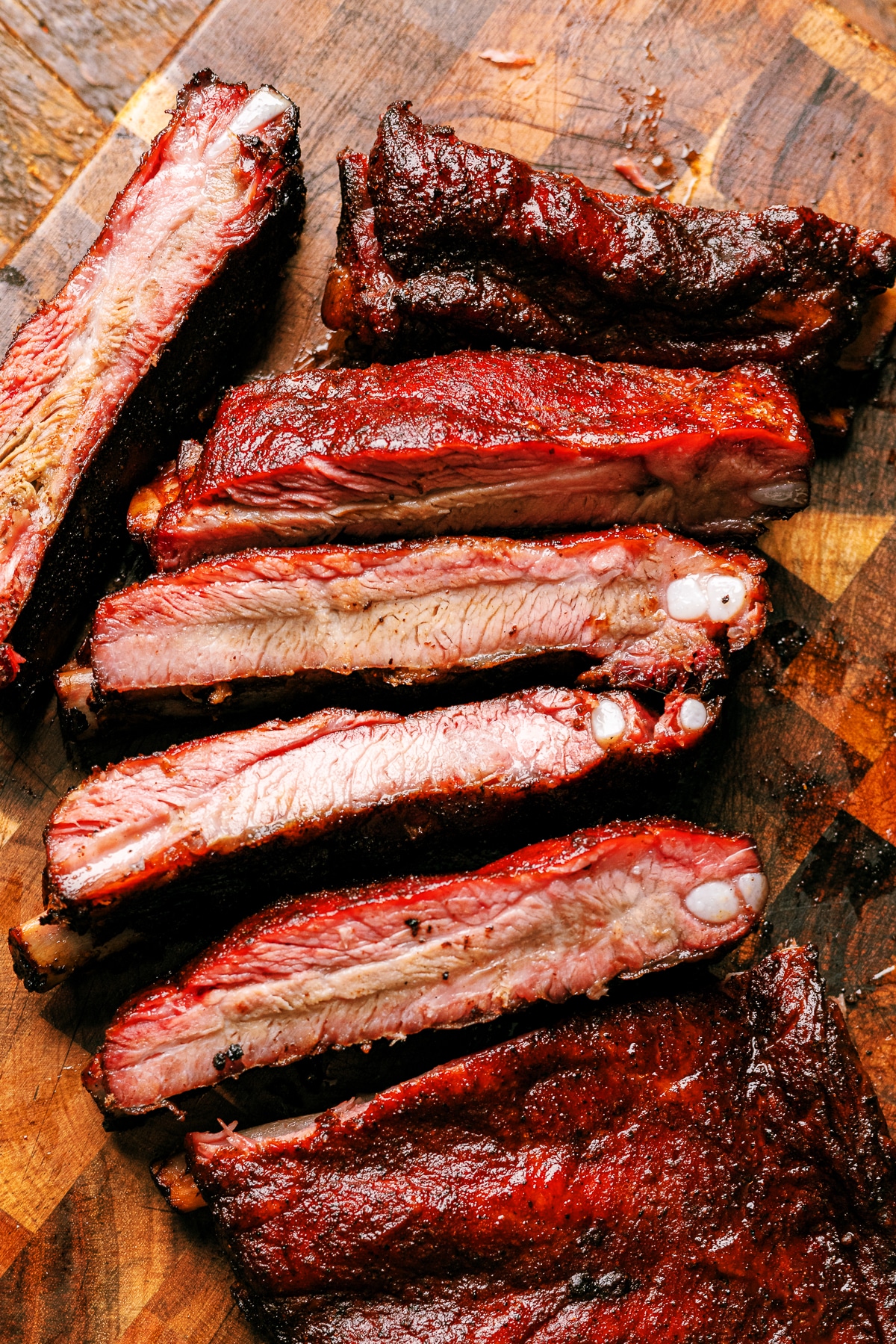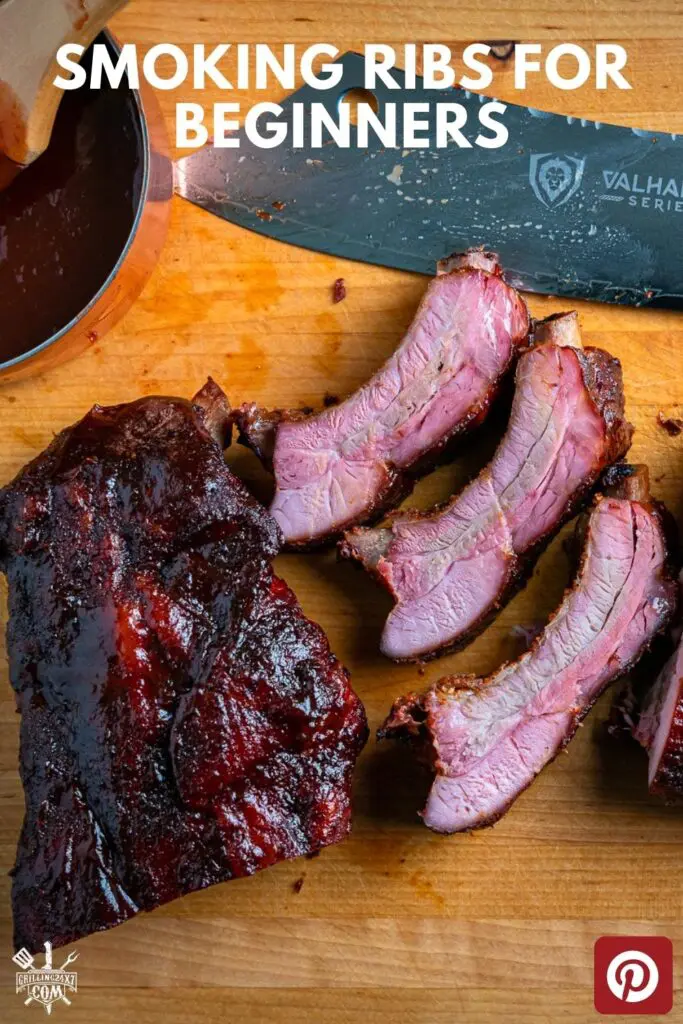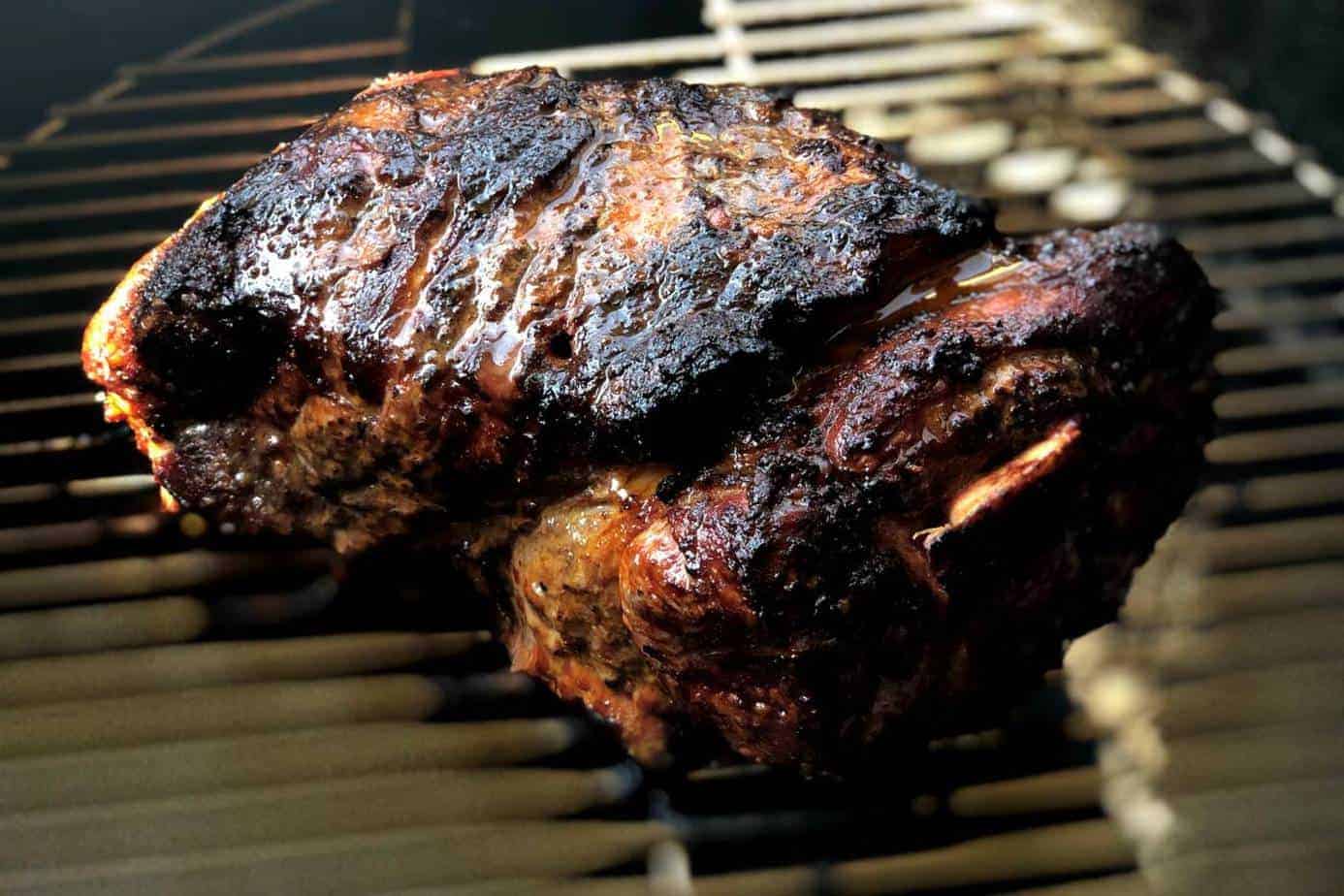
Understanding the Basics of Smoking Ribs at 250 Degrees F
Overview of Smoking Ribs
Smoking ribs is a culinary art that has captured the hearts and taste buds of many barbecue enthusiasts. Simply put, it involves cooking ribs slowly with the help of wood smoke to infuse flavor while achieving that tender, fall-off-the-bone texture. Whether using baby back ribs, St. Louis style, or spare ribs, the core principle remains the same: patience and the right conditions.
- Ribs Types:
- Baby Back Ribs: Tend to be leaner and more tender.
- Spare Ribs: Meatier with a higher fat content.
- St. Louis Style Ribs: A trimmed version of spare ribs with a perfect balance of meat and fat.
The secret lies in the slow cooking process, which not only breaks down the collagen in the meat but also allows the flavors from the wood to meld beautifully with the pork. The combination of low heat and smoke creates an aromatic experience that rivals any high-end barbecue restaurant.
Importance of Temperature Control
Temperature control is critical when smoking ribs, particularly at the optimum 250 degrees F. This steady temperature allows the fats to render and the collagen to break down gradually, resulting in tender, juicy meat.
- Key Temperature Points:
- Ideal Smoking Temp: Maintain around 250°F.
- Doneness: Aim for an internal temperature between 190°F to 205°F.
A well-regulated smoker is essential for achieving the best results. In many cases, maintaining the correct temperature can be tricky due to fluctuations in heat. Using a reliable thermometer is recommended to ensure that the cooking environment remains consistent. A tip from seasoned pitmasters is to monitor not just the smoker’s built-in gauge but to use an internal thermometer placed next to the meat as well.
In essence, understanding the balance of time and temperature is what sets apart professional-grade ribs from the average backyard cook’s attempts. By focusing on maintaining that ideal temperature, cooks can ensure delicious results with each batch of ribs they smoke.

Preparing Your Ribs for Smoking
Choosing the Right Ribs
Selecting the right ribs is the first critical step in achieving smoked perfection. When venturing into the world of smoked ribs, one has the option of choosing between baby back ribs, spare ribs, and St. Louis style ribs. Each cut brings its unique flavor and texture to the table.
- Baby Back Ribs: Often leaner and more tender, these are great for those who prefer a less fatty rib.
- Spare Ribs: Known for their meatiness and rich flavor, spare ribs are generally the favored choice in BBQ joints due to their higher fat content, which keeps them juicy during long hours in the smoker.
- St. Louis Style Ribs: A trimmed version of spare ribs, these provide an excellent balance of meat and flavor without the excessive cartilage found in full spare ribs.
When shopping for ribs, look for a bright pink color and avoid frozen options, as they may lack the freshness and integrity needed for smoking. Always try to source ribs that have a good amount of marbling—that’s the fat within the meat that enhances flavor and tenderness during the cooking process.
Seasoning and Marinating Tips
Now that you’ve chosen the perfect ribs, it’s time to enhance their flavor with proper seasoning and marination. A good rub can elevate the taste significantly. Here’s a simple process to follow:
- Remove the Membrane: This thin layer on the back prevents smoke from penetrating the meat. Slide a knife under the edge to peel it away more easily.
- Binder: Applying mustard or olive oil as a binder can help the seasoning adhere better to the ribs. A light coat works well without overpowering the flavor.
- Dry Rub:
- A classic mix could include salt, pepper, and garlic powder.
- For added complexity, consider spices like paprika, onion powder, or a hint of cayenne for heat.
- Marinating Time: Ideally, let the ribs sit with the rub at least a couple of hours—or overnight in the refrigerator. This allows the flavors to seep deep into the meat.
By following these steps to choose and prepare your ribs, you’re setting the stage for a flavorful and mouthwatering smoked rib experience that family and friends are sure to love!

Smoking Ribs at 250 Degrees F
Smoking Time Guidelines
When it comes to smoking ribs at 250 degrees F, timing is everything. Patience is key, and understanding the expected timelines can help achieve perfectly cooked ribs that are succulent and packed with flavor. Generally, you can anticipate:
- For Spare Ribs: Expect a cooking time of about 4.5 to 5.5 hours. This duration allows the connective tissues and fats to break down, resulting in tender meat that easily separates from the bone.
- For Baby Back Ribs: They typically require a bit less time, usually around 4 hours. Since these ribs are leaner, they tend to cook faster while still absorbing the smoky flavors.
While it might be tempting to open the smoker frequently to peek at your ribs, it’s best to resist. Each time you open the lid, you let out heat and moisture, which can hinder the cooking process and affect the final result. Instead, trust the timing and the temperature—it’s a good practice to check on them about 30 minutes before you anticipate they’ll be done.
Using Wood Chips for Flavor
Selecting the right wood chips is essential for infusing your ribs with flavor while they cook. Different types of wood impart different tastes, adding depth to your smoked ribs. Here are some popular choices:
- Hickory: A classic choice for BBQ, it delivers a strong, smoky flavor that many associate with traditional barbecue.
- Applewood: This is a milder, fruity wood that adds a subtle sweetness to the ribs, making it perfect for those who enjoy a more delicate flavor.
- Mesquite: Known for its intense flavor, mesquite is great if you seek a bold, Texas-style smoke.
Before you begin smoking, ensure the wood is well-soaked in water for at least 30 minutes. This helps the chips smolder rather than burn up quickly, allowing for a longer flavor infusion.
By adhering to these smoking time guidelines and carefully selecting the wood chips for flavor, you’ll be on your way to serving up some fantastic ribs that will impress friends and family alike!

Monitoring and Adjusting During the Smoking Process
Checking for Doneness
As your ribs smoke away, monitoring their doneness is crucial to ensuring a perfect cook. The main goal? Achieving a tender, juicy rib that still holds onto the bone without falling apart. There are a few reliable methods to check for doneness during the smoking process:
- The Bone Exposure Test: As the ribs cook, you’ll notice the meat begins to shrink back from the bone. When you see about a quarter of an inch of bone exposed, that’s usually a good indicator that your ribs are nearing doneness.
- The Bend Test: Using tongs, lift the middle section of the rib rack. A properly cooked rib should bend easily without breaking, indicating that the connective tissue has softened.
- Temperature Check: Insert a meat thermometer into the thickest part of the rib. Ideally, you’re looking for an internal temperature of around 190°F to 205°F. While 170°F may seem adequate, pushing further ensures tender ribs with that coveted ‘fall-off-the-bone’ texture.
Making Temperature Adjustments
Maintaining a steady temperature throughout the smoking process is pivotal. Fluctuations can lead to uneven cooking and affect the final flavor. Here are some tips on how to manage your smoker’s temperature effectively:
- Use a Reliable Thermometer: While many smokers come equipped with built-in thermometers, they may not always be accurate. It’s wise to utilize a separate, high-quality probe thermometer to monitor the actual cooking temperature near the meat.
- Adjust Airflow: If your smoker is running hot, consider partially closing vents to reduce airflow. Conversely, if it’s too cool, open the vents wider to let more oxygen in, which can help ramp up the heat.
- Add Fuel as Needed: Always be prepared to add charcoal or wood chips. Check before each hour of cooking to gauge whether more fuel is needed to maintain that ideal 250 degrees F.
By combining these doneness-checking methods and effective temperature management tactics, you’ll be well on your way to serving up smoked ribs that impress at any gathering!

Resting and Serving Smoked Ribs
Importance of Resting Period
After spending hours in the smoker, the anticipation of enjoying a delicious rack of smoked ribs can be overwhelming. However, it’s critical not to skip the resting period, as this step is essential for achieving the best flavor and texture.
When ribs come off the heat, they need time to relax. Resting allows the juices that have been heated and pushed away from the surface to redistribute throughout the meat. This process can significantly enhance the tenderness and moisture of your ribs. Here’s what to keep in mind:
- Resting Time: Aim for at least 10 to 15 minutes of resting time. More if you can wait! This period is invaluable for ensuring that every bite is juicy and flavorful.
- Tent with Foil: To keep the ribs warm during the resting period, loosely tent them with aluminum foil. This traps some heat without steaming them, allowing the crispy bark to remain intact.
Serving Suggestions and Sauces
Once your ribs have rested, it’s time to serve and enjoy. The simple presentation of perfectly smoked ribs can make a statement on the dinner table:
- Cutting: Use a sharp knife to slice between the bones, presenting beautiful individual portions that showcase the smoke ring and juicy meat.
- Side Dishes: Enhance your meal with classic sides such as coleslaw, baked beans, mac and cheese, or cornbread. These complement the rich flavors of smoked ribs and provide a satisfying balance of textures.
- Sauces: While some may prefer their ribs dry, offering a selection of sauces can cater to varying tastes. Consider:
- Classic BBQ Sauce: Always a favorite, try a homemade version or a local favorite brand.
- Vinegar-Based Sauce: An excellent option for those who enjoy a tangy kick.
- Spicy Glaze: For those who like a fiery touch, a hot sauce or spicy glaze can add an exciting dimension.
By taking the time to rest your ribs and thoughtfully considering how to serve them, you’ll elevate a simple backyard meal into a feast that leaves a lasting impression on family and friends alike!

Tips for Perfecting Your Smoked Ribs
Avoiding Common Mistakes
Smoking ribs can be an enjoyable experience, but there are a few pitfalls that every novice (and even seasoned) pitmaster should aim to avoid. Here are some common mistakes and how to steer clear of them:
- Opening the Smoker Too Often: Every time you lift the lid, heat and smoke escape, which can dramatically alter cooking temperatures. It’s best to keep the lid closed and resist the urge to check on your ribs too frequently.
- Inadequate Temperature Control: Consistency is key. Ensure your smoker remains between 225°F and 250°F throughout the cooking process. Using a reliable thermometer can help you monitor temperatures accurately.
- Skipping the Resting Period: After smoking, allow your ribs to rest for 10-15 minutes. This simple step ensures that juices redistribute, keeping the meat moist and tender.
- Not Removing the Membrane: Leaving the tough membrane on the back of the ribs can hinder smoke penetration and tenderness. Make it a habit to remove it before seasoning.
Enhancing Flavor Profiles
To elevate your rib game, consider these flavor enhancement tips that go beyond the basics:
- Experiment with Rubs and Marinades: Using a sweet and spicy rub or a marinade can create complexity in flavor. Don’t shy away from adding unique spices such as chili powder or even adding a hint of maple syrup to your rub for a sweet finish.
- Try Different Woods for Smoking: Each type of wood imparts a unique flavor. While hickory offers a classic BBQ experience, adding some apple or cherry wood can give your ribs a sweeter note. Mixing different woods can create a custom flavor profile that can delight your taste buds.
- Use a Mop Sauce: Basting your ribs with a mop sauce, made from apple cider vinegar and cooking oil, every 45 minutes can keep them moist and add flavor throughout the smoke.
By following these tips and avoiding common mistakes, you’ll find your journey to perfect smoked ribs not only rewarding but also deliciously satisfying! Enjoy the process and the smoky delights that follow.

Leave a Reply